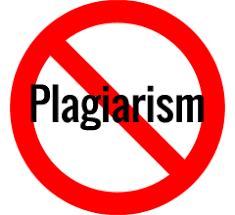
Plaigiarism
Quiz by Desiree Bordonali
Feel free to use or edit a copy
includes Teacher and Student dashboards
Measure skillsfrom any curriculum
Measure skills
from any curriculum
Tag the questions with any skills you have. Your dashboard will track each student's mastery of each skill.
With a free account, teachers can
- edit the questions
- save a copy for later
- start a class game
- automatically assign follow-up activities based on students’ scores
- assign as homework
- share a link with colleagues
- print as a bubble sheet
16 questions
Show answers
- Q1What is plagiarism?Something that is okay to do in school.A bibliographyUsing someone's ideas or writing them as your ownA big word30s
- Q2What are the consequences (penalties) for plagiarism?You can be sued.You can be suspended or expelled.All of theseYou can go to prison and pay a fine.30s
- Q3Why is it important to cite all your sources?You want to take all the credit.You shouldn't cite any sources.It doesn't matter if you cite your sources.You want to give credit to everyone who deserves it.30s
- Q4I can copy and paste information in my report from the internet.Yes, if I cite all my sources.No, you can never cut and paste.No, information on the internet is not accurate.Yes, just make up sources.30s
- Q5The word CITE means. . .to give credit for resources used in writingto take aim at somethingto see something in the distanceanother word for vision30s
- Q6What is a SOURCE?Resources used to find information.Information you copy from a friend.Something you can make up.An injury to the body.30s
- Q7What is a works cited page?A list of sources used in a report and where they can be found.Another name for writing a book.A true story written about someone.A religious book.30s
- Q8Where can you find the works cited page.At the beginning of the report.Only in your research.On a separate piece of paper.The last page of an essay, research paper, etc. (It is not a separate document.)30s
- Q9How many sources should be on a works cited page?15810As many as it takes to give credit to all who deserve it.30s
- Q10Which of the following is not an error that will result in plagiarism?Over-relying on someone else’s organizational structureParaphrasing other people’s information and citing the source of that information.Failing to properly cite one’s sources. D. Over-relying on someone else’s organizational structure.Over-relying on someone else’s words.30s
- Q11Which of the following is the best way to protect yourself against plagiarism?All methods are required in order to protect yourself against plagiarism.Include your own contributions, so you are not relying exclusively on the ideas of others.Always cite your sources.Paraphrase other people’s information and cite the source of that information.30s
- Q12While writing a long research paper, you come across an interesting concept mentioned in a book, and you incorporate this concept into your main argument. After you finish writing the paper, you can't remember where you initially found the concept, so you don't bother to cite the source of your idea. This is considered an acceptable practice (i.e., not plagiarism).TrueFalse30s
- Q13Last semester you spent a great deal of time researching a topic for a class and wrote an involved paper on the topic. The next semester, a different instructor asks you to write a similar paper. You turn in the same exact paper for the new class, without mentioning that it is the same paper that you have already turned in. This is a type of plagiarism.TrueFalse30s
- Q14When writing a paper, you integrate the information from multiple sources together with your own ideas. Rather than separating out the source of each idea, you list all of the citations at the end of the paragraph. This is considered an acceptable practice (i.e., not plagiarism).TrueFalse30s
- Q15Sources are listed alphabetically in the Works Cited page.FalseTrue30s